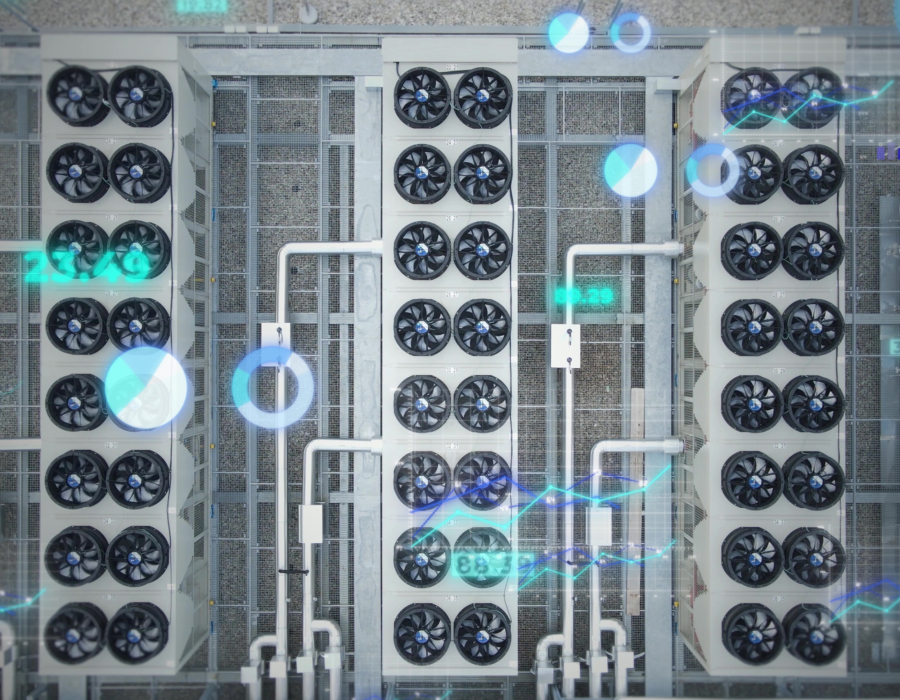Our industry is engaged in an important dialogue to improve the efficiency and resilience of real assets through transparency and industry collaboration. This article is a contribution to this larger conversation and does not necessarily reflect GRESB’s position.
As digital infrastructure becomes a backbone of the global economy, the demand for data centers is surging. These assets support services like artificial intelligence (AI) processing and cloud computing—but they also present growing ESG opportunities, particularly around their carbon footprint across both construction and operational phases. And that footprint begins long before the first server goes online.
While most conversations focus on the operational energy demands of data centers, we must also consider their embodied carbon—the emissions generated during the construction and manufacturing of material that make up the building and its systems. Together, these two forms of carbon contribute to the growing climate cost of our digital infrastructure.

A growing share of global emissions
According to the U.S. Environmental Protection Agency (EPA), data centers accounted for around 1% of global greenhouse gas emissions as of 2023. However, other estimates place that figure between 2.5% and 3.5%, with projections suggesting it could climb to as much as 8% by 2030.
A factor in this expected growth in emissions is the rapid expansion of AI and the infrastructure required to support it. AI workloads often rely on high-performance computing systems, which require more energy and specialized equipment—contributing to both operational and embodied carbon impacts.
Embodied vs. operational carbon
To fully understand the carbon impact of data centers, it’s important to distinguish between two contributors: embodied carbon and operational carbon.
- Embodied carbon includes emissions from the manufacturing, transportation, and assembly of building materials, as well as the construction process itself. It encompasses everything from the foundation & slab-on-grade, walls, and structural framing systems, and site work to mechanical, electrical, and plumbing (MEP) installations and tenant improvements. Each component has its own lifecycle, from manufacturing and maintenance to end-of-life disposal.
- Operational carbon refers to the emissions produced during the daily operation of the facility. This includes the electricity used to power servers and the energy required for HVAC systems to maintain temperature levels. These systems are often significant energy consumers due to the need for continuous, controlled environments.
While operational carbon typically receives more attention—especially in the context of energy efficiency—embodied carbon has become important for decarbonization and can be significant for data centers’ total emissions compared to other building types. This is influenced by the MEP systems design and construction choices.
Why data centers are different
Several characteristics contribute to a higher embodied carbon footprint in data centers compared to other industrial buildings, such as warehouses. These include:
- A higher proportion of office fit-out and technical spaces
- Larger or more complex MEP systems
- Higher wall-to-floor ratios
- Significant power infrastructure demands, including electrical substation capacity and redundancy
In many warehouse facilities, tenant improvements and MEP systems may account for a smaller portion of the total embodied carbon. In contrast, in data centers, these systems—along with elements like structural frames & foundations—can dominate the building’s total carbon impact.
Looking ahead
As data center development continues—driven by digitalization, AI adoption, and rising demand for computing capacity—there is growing interest in understanding both operational and embodied carbon impacts across the asset lifecycle. These impacts may influence sustainability performance indicators used in frameworks such as GRESB, where emissions data and resource efficiency are key considerations.
Key areas of emerging focus include:
- Lifecycle carbon assessments to capture both embodied and operational emissions.
- Material and system selection that can reduce upfront carbon in design and construction. A critical barrier to reducing embodied carbon in MEP systems is the limited transparency of product data, which hinders informed decision-making during product selection. By aligning with the MEP 2040 Commitment, project teams not only prioritize sustainability but also play a pivotal role in advancing industry standards toward greater material disclosure and lifecycle accountability.
- Energy optimization strategies, including improvements in electrical and mechanical efficiency, guided by ASHRAE 90.4 standards, which set performance targets for the Mechanical Load Component (MLC) and Electrical Loss Component (ELC).
As ESG reporting frameworks evolve, broader recognition of embodied carbon may support a more complete picture of a data center’s environmental performance—supporting more informed decision-making, benchmarking, and long-term portfolio planning.
This article was written by Eliana Peralta-Sapienza, Building Performance Analyst at BranchPattern. Learn more about BranchPattern here.


